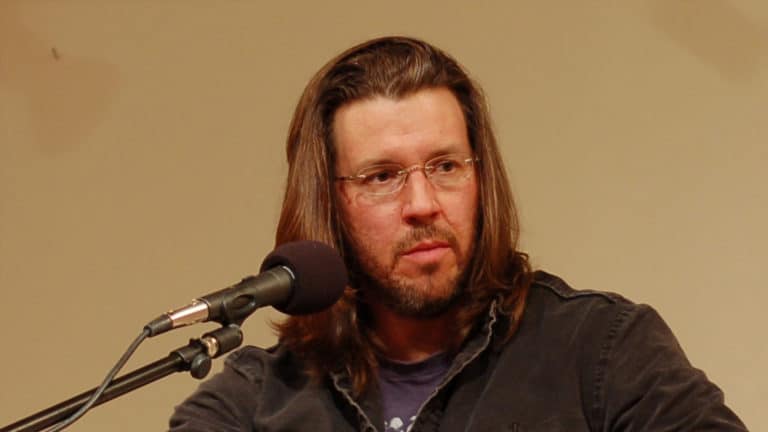450 pounds. That was the weight of the steel cable that Philippe Petit needed to string between The Twin Towers to pull off his legendary tightrope walk. The distance between the towers was vast, 138 feet, and, of course, Petit and his conspiring band of assistants had no permit for his high wire act. For months, as they plotted their stunt, Petit’s team considered various schemes to stretch the cable over that void; at last they came up with a wonderfully fanciful solution. They tied the end of that weighty line to a slightly thinner cable, the end of which they tied to a lighter rope, and so on until at the terminus of a great many linked cords, they fastened a length of fishing line. The end of the fishing line was tied to an arrow, which Petit set into a bow, then shot from one roof to the next. Contact! A team on the second tower began to pull in that succession of thickening lines until at last they had secured the 450-pound cable that let Petit walk into the sky.
How? For many years—since long before I could call myself a writer—I’ve sat through the Q&A sections of authors’ book readings, impatiently listening to the usual questions—“where do you get your ideas?” and “what are your inspirations?” and “can you support yourself on your writing?”—waiting for some other audience member to ask this most basic question. How? I’ve often asked it myself. How do you translate your first stirrings into a book, how does nothing become a very incredible something? The answers that writers offer are rarely direct. Some speak about outlining; others talk about blindness and surprise; many don’t even attempt to answer: for some, the answer is just as mystifying to the author as it is to the reader. But the majority of writers, confronted with the fundamental question of how they conduct their working life, resort to metaphor.
Metaphor, perhaps, is necessary to offer any sort of answer that could possibly encompass something as ambiguous, fraught and complex as the writing process. E.L. Doctorow says, “Writing is like driving at night in the fog. You can only see as far as your headlights, but you can make the whole trip that way.” Edmund White offers a playful, architectural simile: “it feels like building a sand castle or a Lego tower.” Hillary Mantel describes a musical quality to her work, “like composing a tune.” In her provocative, insightful speech That Crafty Feeling, Zadie Smith identifies that writers’ replies to the question of how generally fall into one of two modes, which Smith calls “The Macro Planner” and “The Micro Manager.” The Macro Planner, Smith writes, “makes notes, organises material, configures a plot and creates a structure—all before he writes the title page.” “The Micro Manager,” on the other hand, “start[s] at the first sentence of a novel and … finish[es] at the last.” Like White, Smith invokes an architectural metaphor to clarify. “Macro Planners have their houses largely built from day one, and so their obsession is internal—they’re forever moving the furniture.” Micro Managers, on the other hand, “build a house floor by floor, discretely and in its entirety.” Smith identifies herself as a Micro Manager, and she makes a persuasive argument for the superiority of her approach. Micro Managers, Smith writes, “exist only in their present moment, in a sensibility, in the novel’s tonal frequency line by line.”
While I find Smith’s taxonomy useful, I also see that it is problematically limited. When I read writers like William Faulkner, Joyce Carol Oates and James Salter—outline-producing writers who I know, from interviews, essays, and notes, would qualify as Smith’s Macro Planners—I find writers who seem very much to exist in the present moment of the sentence. After having been through the editing process on three novels of my own—subjected, like any writer, to an editor’s suggestions on how I might clarify and condense the movement of plot—I’m certain that most Micro Managers are at least briefly forced by their editors to become temporary Macro Planners, renovating their sprawling pages into a more sound structure. And so, while Smith’s theory might wisely identify the two poles to which writers generally gravitate, I also suspect that this division is more of a spectrum than a dichotomy, with most writers falling somewhere in between.
Or perhaps the truth of the writing process is simply too elusive, contradictory and idiosyncratic to fit comfortably into any single mode of classification. Reading Smith’s speech, I found myself envying her Micro Manager mode, which she claims, has “one great advantage… [that] the last day of your novel truly is the last day. If you edit as you go along, there are no first, second, third drafts. There is only one draft, and when it’s done, it’s done.” But I also envy the Macro Planner, who supposedly draws elaborate, intricate plans in advance and so has the reassurance the entire enterprise won’t crumble. The truth is that I can’t say that the way I write falls into either camp or even into that spectrum. Maybe it’s up to all of us to invent our own metaphors, and maybe the metaphors themselves will never be fully descriptive. But metaphors can at least be clarifying for their writers and possibly also to those struggling similarly; toiling through my own manuscripts, I’ve found other writers’ self-reporting metaphors useful, suggesting alternative approaches that I’ve been able to try on for a while when I reach some particularly forbidding blockage. And so, into a world of nighttime drivers, sand castle-builders, Micro Managers and Macro Planners, I’d like to add my own: the high-wire stuntman.
My first draft is like Petit’s arrow: a quick, thin, delicate act, a projectile flung into the sky. I shoot across the chasm in a single arc, a couple months of sometimes nonsensical and often illegible writing, aiming for a distant idea of where the thing might land. Very often, the arrow never finds the far roof: I have quivers full of failed attempts. But sometimes, after a swift first draft, I reach the end, give the line a tug, and I can feel a tautness. And so I begin pulling at that line, drawing in a slightly thicker rope, fleshing out characters and relationships, honing and deepening plot. Each draft is a slightly thicker cord to replace the last. There is an element of moment-by-moment discovery to this process, but not exactly in the blind way Smith and Doctorow describe, and there is an element of a macro plan, but not in a highly structured or pre-arranged way. For a novel, the process takes years, and the final cable in no way resembles the original little thread even if it still follows along the same line. But at last—shoulders aching, palms sweating—the 450 pounds are in place, a possible bridge from what I had imagined to the world beyond. A book. But is it sturdy enough? Sometimes, either the cord or my courage fails, but also sometimes not. Sometimes—especially if the process has taken so long that failure can seem like its own kind of death—I can find a way to seal my eyes, take a breath, and step into that void.





















